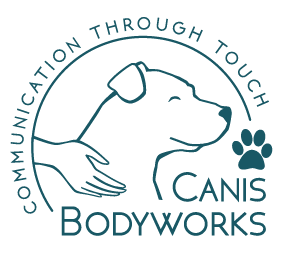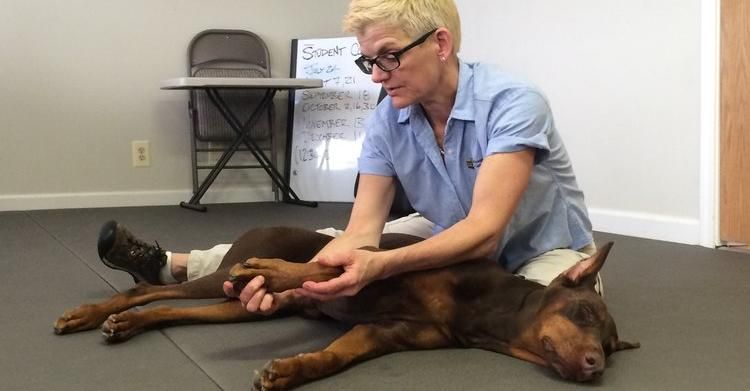It's that time again…the Fourth of July! Many of us look forward to this day for the time off, the barbecues, the parades, and, of course, the fireworks. Not everyone is so excited for the Fourth, though – specifically those of us with a pet who is anxious, afraid, or who downright panics with every loud blast and boom. Along with thunderstorm season, the Fourth of July can be the most dreaded time of year for pet parents whose dogs have aversions, fears, or even phobias toward loud noises. While others enjoy the festivities, pet parents break into management mode to do whatever possible to help frightened pets feel safe and to reduce their stress levels. So what are the possibilities for managing dogs’ stress during noisy Fourth of July celebrations?
First Things First…Keep Them Safe
Make absolutely sure that your animals are secure in your home and yard. The abrupt sound of fireworks can panic a dog and send him into fight or flight mode. An intense desire to flee can often give dogs the motivation to break through or jump over a fence, or to chew their way out of an enclosed space. Keep dogs indoors as much as possible during this time.
Provide a Safe Go-To Place
Make sure your dog has easy access to her crate or to another go-to place where she feels safe.
Minimize Other Stressors
If your dog gets anxious when people come over, then having a party during this already stressful holiday may not be the best choice. If a party is already planned, be sure to remove your dog from the main party area and provide him with a safe and quiet zone where he can be away from the hubbub.
Reduce Outside Noise
Close all windows and put your pets in a quiet part of the home without windows, such as a basement or inner room.
Play Music
Calming music, especially if your dog is already familiar with it, can drown out external noise and provide a soothing effect.
Keep Your Dog Busy
First Things First…Keep Them Safe
Make absolutely sure that your animals are secure in your home and yard. The abrupt sound of fireworks can panic a dog and send him into fight or flight mode. An intense desire to flee can often give dogs the motivation to break through or jump over a fence, or to chew their way out of an enclosed space. Keep dogs indoors as much as possible during this time.
Provide a Safe Go-To Place
Make sure your dog has easy access to her crate or to another go-to place where she feels safe.
Minimize Other Stressors
If your dog gets anxious when people come over, then having a party during this already stressful holiday may not be the best choice. If a party is already planned, be sure to remove your dog from the main party area and provide him with a safe and quiet zone where he can be away from the hubbub.
Reduce Outside Noise
Close all windows and put your pets in a quiet part of the home without windows, such as a basement or inner room.
Play Music
Calming music, especially if your dog is already familiar with it, can drown out external noise and provide a soothing effect.
Keep Your Dog Busy
The best situation for helping a stressed dog is to spend time with her and engage in fun activities together. Play “find it” games by hiding food behind cushions or in small cardboard boxes. Work on some obedience training. Give your dog things to keep her busy on her own, like a frozen, stuffed Kong. Dogs can spend hours focused on a frozen Kong that you’ve stuffed with wet dog food, sweet potato, yogurt, or other yummy, high value treats. The stuffed Kong can be used in place of a meal to prevent the consumption of excess calories. If your dog is already so stressed that she will not take the Kong, try some or all of the previously mentioned ideas to help her relax to the point where she will take the food.
Plan Ahead with Exercise
Give your dog the opportunity to exercise earlier in the day before the festivities begin. Go on a long walk together, visit the dog park or schedule a doggy play date with a friend, or take a swim together at a local swimming hole. A tired dog is a more relaxed dog. However, excessively exercising your dog can cause stress, too, so don’t overdo it.
Try a Thundershirt
Effectiveness of the Thundershirt is based on the theory that firm, sustained pressure on the body has a calming effect. If you don't already have one, try putting a small shirt on your dog and tying it tightly. If your dog has an aversion to this, teach him to accept it first by pairing the shirt-wearing with high-value treats, or give him a stuffed Kong while he wears the shirt. If he is still uncomfortable with the shirt, try again another time. Forcing a new experience onto a dog can add more stress. New experiences can take time for dogs to accept.
Diffuse Essential Oils
When a dog inhales calming essential oils, such as lavender or Peace and Calming, she can feel more relaxed once the odor molecules reach the limbic system of the brain. Sometimes referred to as the “emotional brain,” the limbic system is directly linked to those parts of the brain that control heart rate, blood pressure, breathing, memory, stress levels, and hormone balance. Smells can have a strong influence on emotion. If you don't have an essential oil diffuser, you can put a drop or two (but not more) of lavender essential oil on your dog's collar.
Use Focused Touch Techniques
When applied to specific areas of the body, touch and massage are proven to be helpful for immediate relaxation. Be sure to go slow, breathe, and focus all of your energy on your touch.
Touch can feel good and relaxing on any area of the body if your dog normally likes that area to be touched. Knowing what your dog's yummy spots are will help guide you as you comfort your dog with touch and massage.
Advice for Future Fourths
YOU Are the Key – Be Calm for Your Animal
Some people believe that touching, holding, and massaging your dog when he is feeling anxious or afraid will reinforce his fear. Not true. The key, though, is that you remain calm and in control of your own emotions as you are comforting your dog. Your dog looks to you for guidance, so if you are nervous, he will be nervous, too. Breathe and practice relaxation techniques for yourself so that you can be a source of calm for your dog when he needs it most.
With proper preparation, the Fourth of July can become a holiday infused with joy and calm for you and your animals rather than a dreaded day filled with fear.
Plan Ahead with Exercise
Give your dog the opportunity to exercise earlier in the day before the festivities begin. Go on a long walk together, visit the dog park or schedule a doggy play date with a friend, or take a swim together at a local swimming hole. A tired dog is a more relaxed dog. However, excessively exercising your dog can cause stress, too, so don’t overdo it.
Try a Thundershirt
Effectiveness of the Thundershirt is based on the theory that firm, sustained pressure on the body has a calming effect. If you don't already have one, try putting a small shirt on your dog and tying it tightly. If your dog has an aversion to this, teach him to accept it first by pairing the shirt-wearing with high-value treats, or give him a stuffed Kong while he wears the shirt. If he is still uncomfortable with the shirt, try again another time. Forcing a new experience onto a dog can add more stress. New experiences can take time for dogs to accept.
Diffuse Essential Oils
When a dog inhales calming essential oils, such as lavender or Peace and Calming, she can feel more relaxed once the odor molecules reach the limbic system of the brain. Sometimes referred to as the “emotional brain,” the limbic system is directly linked to those parts of the brain that control heart rate, blood pressure, breathing, memory, stress levels, and hormone balance. Smells can have a strong influence on emotion. If you don't have an essential oil diffuser, you can put a drop or two (but not more) of lavender essential oil on your dog's collar.
Use Focused Touch Techniques
When applied to specific areas of the body, touch and massage are proven to be helpful for immediate relaxation. Be sure to go slow, breathe, and focus all of your energy on your touch.
- Chest. Rub your dog’s chest firmly with the flat part of your hands. This not only feels good, but the sustained pressure signals the brain to relax. The chest is also the location of one of the body’s calming acupressure points.
- Body. Use long firm strokes from the top of your dog's head down the side of her spine to the back of her feet help to balance your dog.
- Head. Gently stroke the top of your dog’s head and in between her eyes – this is another go-to acupressure point for calming. Also, stroke her ear flaps firmly from the base to the tip of the ear.
Touch can feel good and relaxing on any area of the body if your dog normally likes that area to be touched. Knowing what your dog's yummy spots are will help guide you as you comfort your dog with touch and massage.
Advice for Future Fourths
- Training. Seek out the assistance of a skilled positive-methods trainer to help you desensitize and counter-condition your dog to accept loud noises. This training takes time and can be challenging for dogs who are older and exceptionally fearful of noise, so it should be started well before the next Fourth of July.
- Veterinary Assistance. Last but not least, seek out veterinary help at least several weeks before the July 4th holiday. Your dog may need help and/or medication for a condition that perpetuates and makes the noise phobia worse. Avoid giving your dog Acepromazine (known as ACE), Benadryl, melatonin, or any other medication that makes him drowsy. These “remedies” create a dog who is not only drowsy, but just as stressed as before. A veterinarian or veterinary behaviorist who specializes in behavior and behavior modification can offer better alternatives that promote calm rather than drowsiness.
YOU Are the Key – Be Calm for Your Animal
Some people believe that touching, holding, and massaging your dog when he is feeling anxious or afraid will reinforce his fear. Not true. The key, though, is that you remain calm and in control of your own emotions as you are comforting your dog. Your dog looks to you for guidance, so if you are nervous, he will be nervous, too. Breathe and practice relaxation techniques for yourself so that you can be a source of calm for your dog when he needs it most.
With proper preparation, the Fourth of July can become a holiday infused with joy and calm for you and your animals rather than a dreaded day filled with fear.




